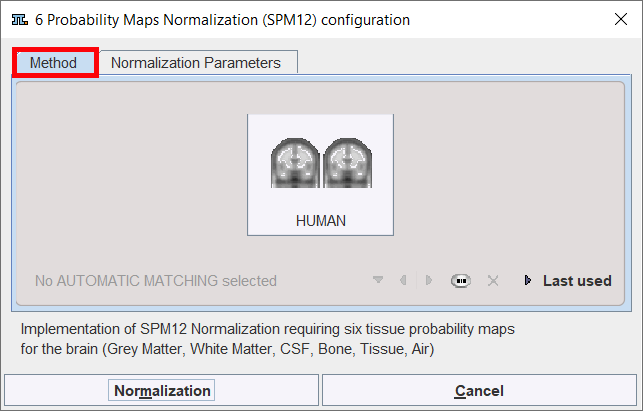The 6 Probability Maps Normalization is based on PMOD's Java implementation of the Unified Segmentation methodology in SPM12 developed by Ashburner et al [11]. In addition to the probability maps of grey matter, white matter and CSF it uses probability maps of bone, soft tissue and air/background.
The 6 Probability Maps Normalization (SPM12) button provides access only for HUMAN method. An interface dialog window appears with two tabs. The first one serves to quickly retrieve species sensitive pre-defined or saved configurations of the iterative matching settings (only HIUMANS), the second one gives access to all parameters.

The following parameters allow fine-tuning the algorithm.

Basic Parameters
Sampling rate |
Pixel sampling rate for the calculation. |
Input mask |
A mask file can be selected which masks the part of the input image which should be disregarded in the normalization. |
Advanced Parameters
The Advanced parameters are usually only changed if a normalization fails or if the user aims at a specific effect.
Denoising |
Image denoising prior to the normalization using the fast Non Local Means Analysis method with settings None, Low, Medium, Strong. |
Bias Regularization |
Serves for compensating modulations of the image intensity across the field-of-view. Depending on the degree of the modulation, a corresponding setting can be selected from the list: None, Very Light, Light, Medium, Heavy, Very Heavy. The parameter to the right indicates the FWHM [mm] to be applied. The larger the FWHM, the smoother the variation that is assumed. |
Affine regularization |
Two different initializations of the affine registration are supported, European brains and East Asian brains, as well as No regularization. The setting should correspond to the nature of the subject under study. |